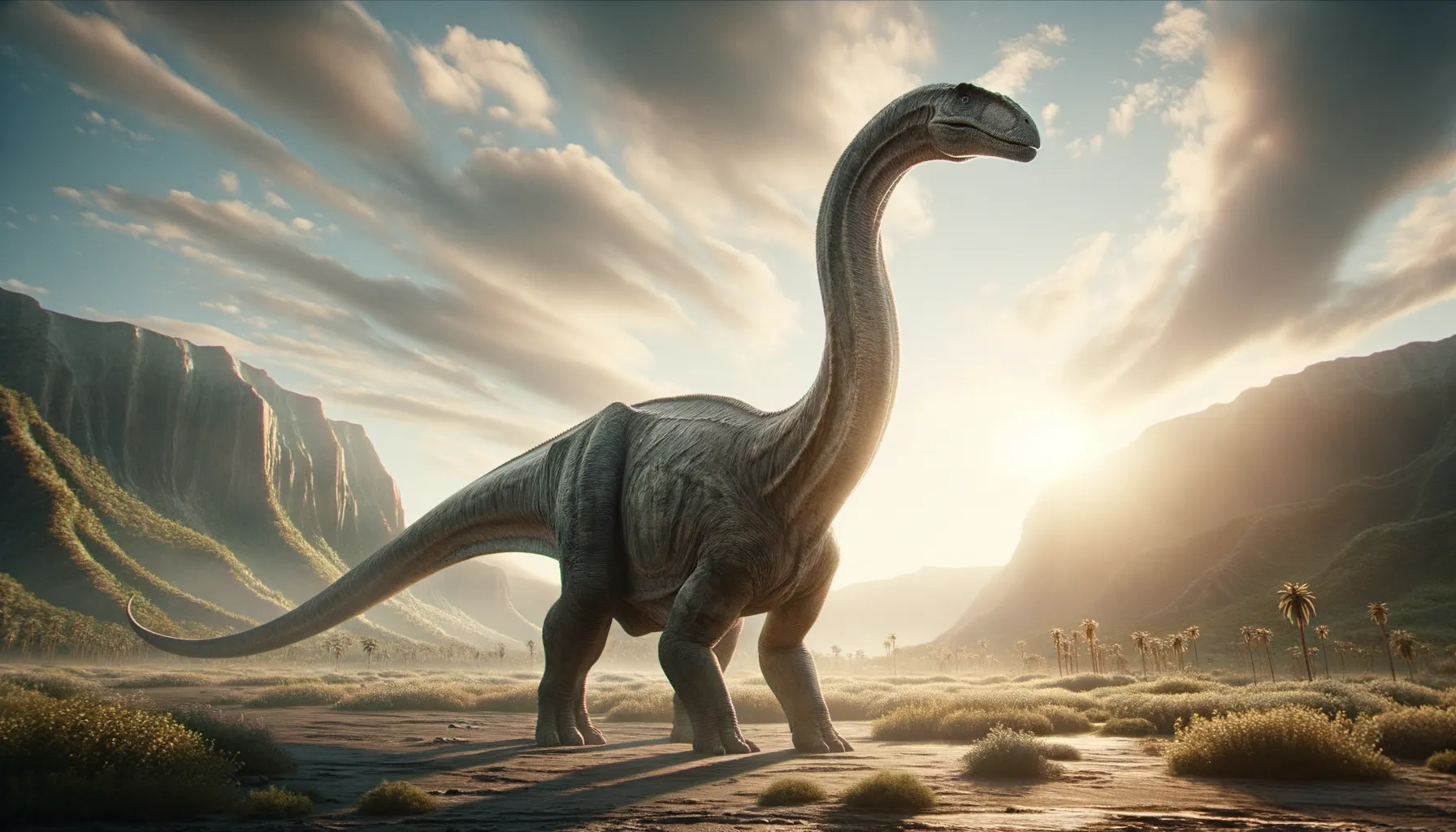
Pleurocoelus
Gentle giant of the Cretaceous realms.
Period
Cretaceous
Length
Estimated to be around 15 to 18 meters long.
Height
Could reach up to 12 meters tall.
Weight
Estimated to weigh between 20 to 30 tons.
Pleurocoelus was a large herbivorous dinosaur known for its long neck and massive size. It lived during the Cretaceous period and roamed the region that is now North America. Its size and weight suggest it was a slow-moving creature that possibly lived in herds for protection. Despite its imposing stature, it was a gentle giant, primarily feeding on plant material.
Diet
Pleurocoelus was a herbivore, primarily feeding on a variety of plants. Its long neck allowed it to reach high vegetation, and it likely consumed leaves, branches, and ferns.
Hunting
As a herbivore, Pleurocoelus did not hunt other animals. It spent most of its time foraging for plants, using its long neck to access high foliage.
Environmental challenges
Pleurocoelus faced challenges such as changes in vegetation due to climate shifts. Additionally, finding adequate food to sustain its massive size was crucial. Predators like large carnivorous dinosaurs posed a threat, especially to the young and weaker members of the herd. Seasonal variations and natural disasters could further impact food availability and habitat conditions.
Speed
Relatively slow due to its large size.
Lifespan
Lived for several decades, possibly up to 70 years.
First discovery
Discovered in the late 19th century in Texas, USA.
Fun Facts
- Pleurocoelus was a large dinosaur that lived during the Early Cretaceous period, around 110 million years ago.
- Its name means 'hollow side', referring to the unique hollow air chambers found in its vertebrae.
- Pleurocoelus was a sauropod, which means it had a long neck and tail and was one of the giant, gentle plant-eaters of its time.
- Fossils of Pleurocoelus were first discovered in the United States, specifically in the states of Texas and Maryland.
- There's been some debate among paleontologists whether Pleurocoelus should be classified as a distinct species or as part of the genus Astrodon.
- Despite its massive size, Pleurocoelus likely shared its environment with other large dinosaurs and predators of its era.
- In the late 1990s, Pleurocoelus was named the state dinosaur of Texas, highlighting its importance in the region's geology.
Growth and Development
Pleurocoelus started its life as a small hatchling, growing rapidly through its early years. Its development involved significant growth in neck and limb length. The dinosaur reached near-full size several years after hatching, maintaining a steady growth rate until maturity. As it aged, its growth slowed, and it focused energy on reproduction and survival strategies.
Habitat
Pleurocoelus inhabited lush, semi-tropical environments with abundant vegetation. Its preferred habitats were likely floodplains and riverbanks, where plant life was plentiful. These environments provided not only food but also water and cover from predators. The rich biodiversity of its habitat contributed to the co-evolutionary dynamics with other species.
Interaction with other species
Pleurocoelus coexisted with a variety of other dinosaurs, including both herbivores and carnivores. It likely formed herds with its species to deter predators and improve survival chances. Carnivorous dinosaurs, like Acrocanthosaurus, were potential threats, particularly to the young. Relationships with other herbivores were largely non-competitive due to differing dietary specializations.
Natural lifespan
Pleurocoelus had a natural lifespan of several decades.
Reproduction
Pleurocoelus is believed to lay eggs, which it carefully buried or covered for protection. Female Pleurocoelus likely showed nesting behaviors, choosing secure sites for laying eggs. Hatchlings were vulnerable and relied on the herd for protection against predators. Growth rates in the early years were likely high to leave the vulnerable stage quickly.
Social behaviour
Pleurocoelus likely exhibited social behaviors, forming herds for protection and social interaction. Communication might have involved vocalizations and physical gestures with other herd members. Herd dynamics played a significant role in their survival strategy, particularly for juvenile care and predator alert systems. The herd structure likely provided stability and social learning opportunities.
Fossil locations
Fossils of Pleurocoelus have primarily been found in the southeastern United States. Significant discoveries have been made in Texas, providing insights into its anatomy and lifestyle. These fossil sites have offered a wealth of information about the dinosaur's diet, growth patterns, and environmental adaptations. Ongoing excavations continue to reveal more about this intriguing dinosaur species.
